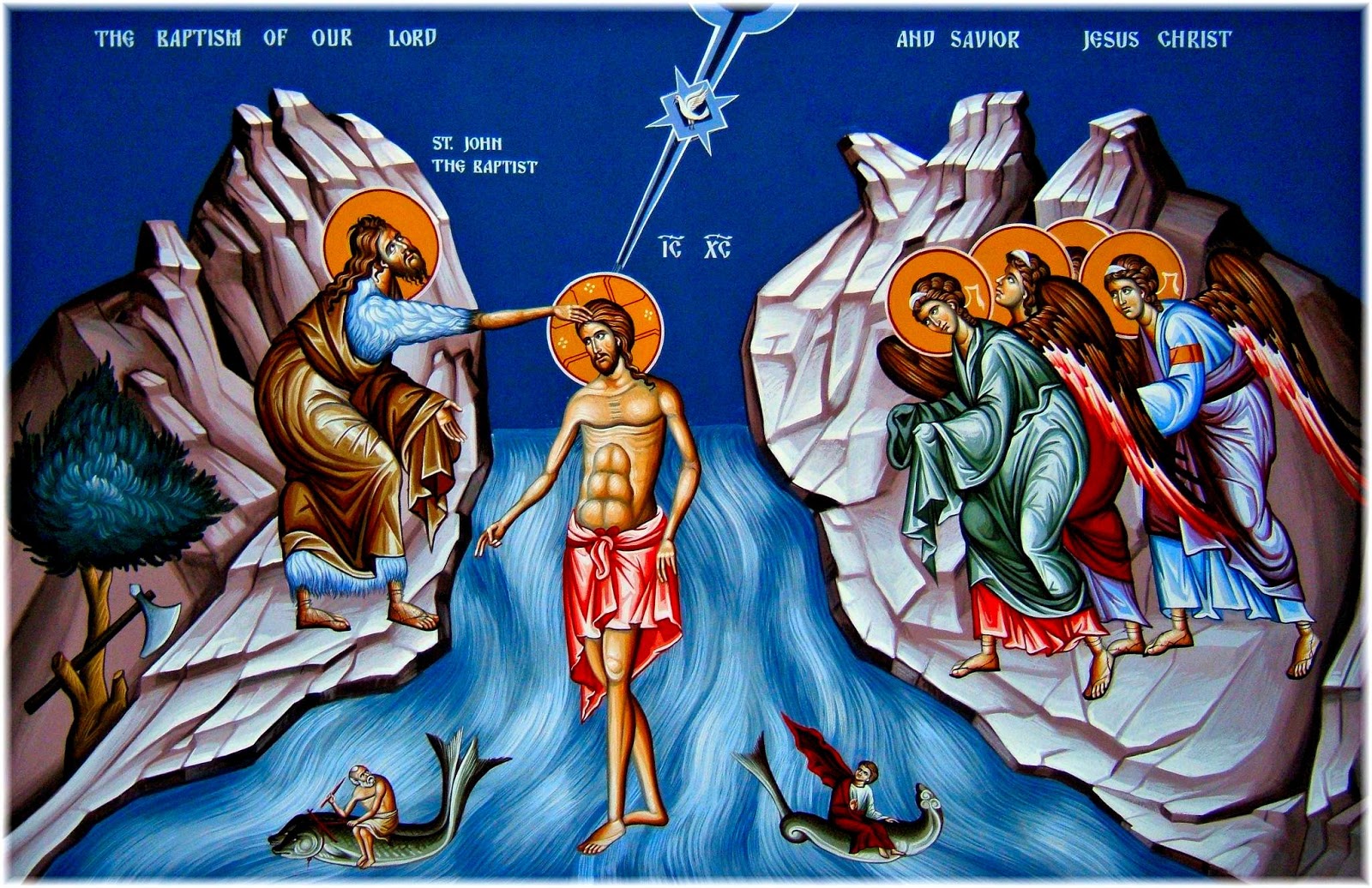This feast began as a thematic, rather than an historical, commemoration, as is implied by its name which means “the manifestation of God”. It celebrated the birth of Christ, his manifestation to the Gentiles, the Magi, and to Hebrew society at his baptism. It remains thus for the non-Calcedonian Churches. When Byzantine Churches eventually accepted the Roman date for the incarnation feast, this feast concentrated on Christ’s baptism and the revelation of the Trinity that accompanied it.
The themes of Light and Water, well-grounded in biblical expression, figure prominently in the texts of this feast.
Just as in the story of Noah, the flood was the sign of death and rebirth, so Christ’s descent into the river as both servant and creator points to renewal of all creation, prompting, perhaps, the evangelist to describe the descent of the Spirit as a dove, token of the world’s rebirth in the ancient myth when it returned with an olive branch.
The Great Blessing of Water at the Sunday following this feast is a perpetuation of Christ’s sanctification of the Jordan. Like all the Mysteries of the Church, it is not we, but Christ himself who blesses the water. As we drink it and use it to bless our surroundings, we recall our own immersion in Christ at Baptism and of the potential for everything around us to be a vehicle of God’s grace. (NS)
